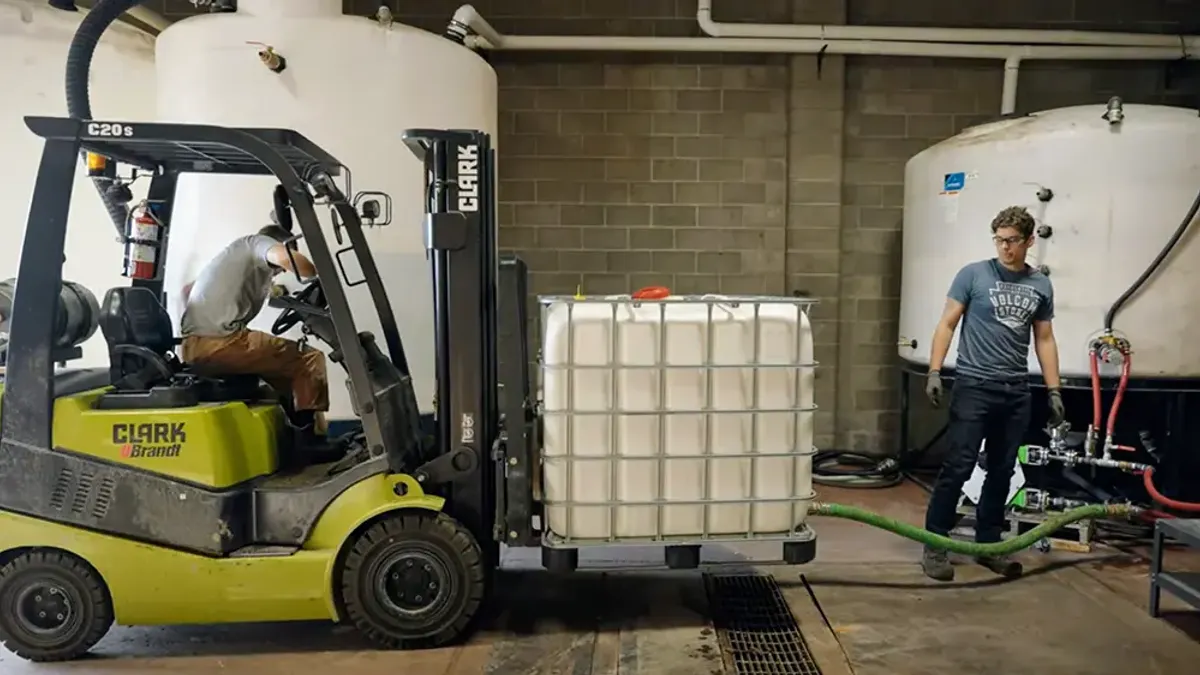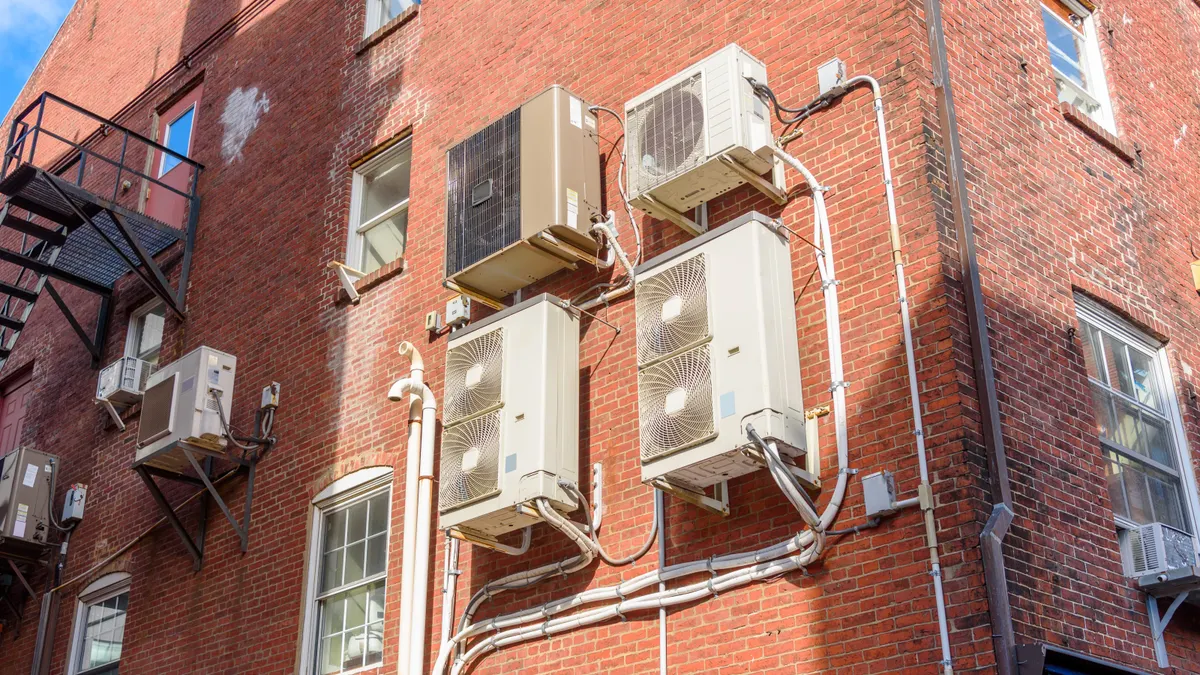The repercussions of human-driven climate change are extensive and impacting every region of the U.S., and only expected to worsen overtime due to the continued use of fossil fuels and lack of deeper cuts in greenhouse gas emissions, according to a new congressionally mandated report published Tuesday.
The Fifth National Climate Assessment warned that global warming is not decreasing fast enough in the U.S., despite declines in emissions from their peak in 2007 and energy-efficient innovations to move to zero- and low-carbon electricity and fuels. It also noted the current state of decline is not sufficient to meet national and international climate commitment goals.
The assessment — a comprehensive analysis of the state of climate change in the U.S., compiled by federal agencies and due every five years — draws on the expertise of nearly 500 authors and 250 contributors from every state.
Extreme climate disasters also cost the U.S. close to $150 billion each year — a conservative estimate that does not account for loss of life, healthcare-related costs or damages to ecosystem services. The country now experiences a billion-dollar disaster approximately every three weeks on average, compared to once every four months during the 1980s, according to the report’s findings.
To properly address climate risks and reach net-zero emissions by mid-century, the U.S. needs to explore additional mitigation options that involve longer-term inclusive planning and investments in transformative adaptation, the report said.
Where does the U.S. stand?
The country’s annual greenhouse gas emission fell 12% between 2005 and 2019, an achievement that was largely driven by electricity generation moving away from coal and toward renewable energy and natural gas — leading to a 40% drop in emissions from the electricity sector.
There has also been growth in the capacities of wind, solar and battery storage technologies, which has been supported by the rapidly declining costs of zero- and low-carbon energy technologies. Wind and solar energy costs dropped 70% and 90%, respectively, over the last decade, while 80% of new generation capacity in 2020 came from renewable sources.
While this progress is notable, it is not enough to keep pace with today’s climate-related risks and prepare for future challenges, the report says. While U.S. emissions “remain substantial,” they would have to decline by more than 6% per year on average to reach net-zero emissions around mid-century, and to meet current national mitigation targets and international temperature goals. This would require a significant increase from the rate emissions fell between 2005 and 2019, which was less than 1% per year on average.
White House steps in to finance ‘climate resilience’
In conjunction with the release of the climate assessment, President Joe Biden announced more than $6 billion in investments Tuesday to make communities across the country more resilient to the impacts of climate change. Efforts to curb climate risk would include strengthening the aging electric grid infrastructure, reducing flood risk to vulnerable communities, supporting conservation efforts and advancing environmental justice goals.
Biden called climate change “the ultimate threat to humanity” and said his administration also launched an online tool to allow citizens to see the impact of climate change on their own communities.
Climate risk and action on a city and state level
Though every corner of the country is impacted by climate change, some states are experiencing these effects more than others. States such as California, Florida, Louisiana and Texas are facing more significant storms and extreme swings in precipitation, while landlocked states like Kentucky and West Virginia have experienced devastating flooding from rainstorms.
Between 2018 and 2022, the U.S. was hit with 89 climate-related disasters, including droughts, floods, tropical cyclones, wildfires and severe storms. Florida experienced the highest economic damages from a single event — Hurricane Ian — costing around $113 billion.
Consequently, the report found that since 2018, the number of city- and state-level climate adaptation plans and actions has increased by 32%, complemented by a 14% increase in the total number of new state-level mitigation activities. However, these adaptation efforts are insufficient to keep pace with future changes in climate, the report notes.
Most adaptation actions to date have been “incremental” and “small in scale.” The report said minor steps such as using air-conditioning during heat waves or reducing water consumption during droughts are not good examples of the “transformative adaptation” needed to curb global warming. Instead, states should focus on redesigning cities and buildings to address the rising heat and shifting to water-intensive industries to match projected rainfall patterns.
“Transformative adaptation involves fundamental shifts in systems, values, and practices, including assessing potential trade-offs, intentionally integrating equity into adaptation processes, and making systemic changes to institutions and norms,” the researchers said.
Where to from here?
To achieve net-zero emissions by mid-century, the U.S. needs to invest in large-scale technological, infrastructure, land-use, and behavioral changes and shifts in governance structures, the report said.
Mitigation steps include transitioning to transportation and heating systems that use zero-carbon electricity or low-carbon fuels, such as hydrogen; increasing the efficiency and sustainability of food production, distribution, and consumption; and implementing urban planning and building design that reduces energy demands through more public transportation and active transportation and lower cooling demands for buildings.
The National Climate Assessment’s recommendations are in line with recent legislative measures undertaken by states to curb climate risk and hold large corporations accountable for their carbon footprint.
Earlier this year, California Gov. Gavin Newsom signed two major climate-related legislative measures — Senate Bill 253 and Senate Bill 261 — into law, which push for more transparency from large companies. SB 253 would require businesses operating in California with annual revenues exceeding $1 billion to report their greenhouse emissions each year, whereas SB 261 would require business entities with revenues exceeding $500 million to publicly disclose their climate-related financial risks and countermeasures.


















